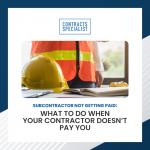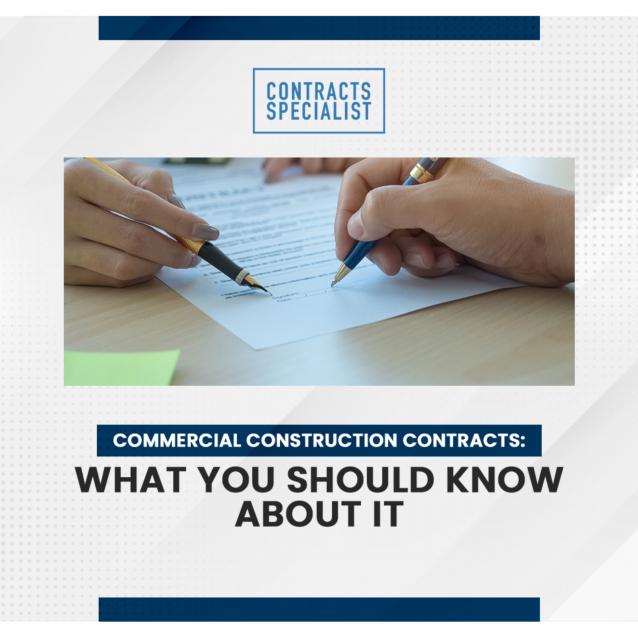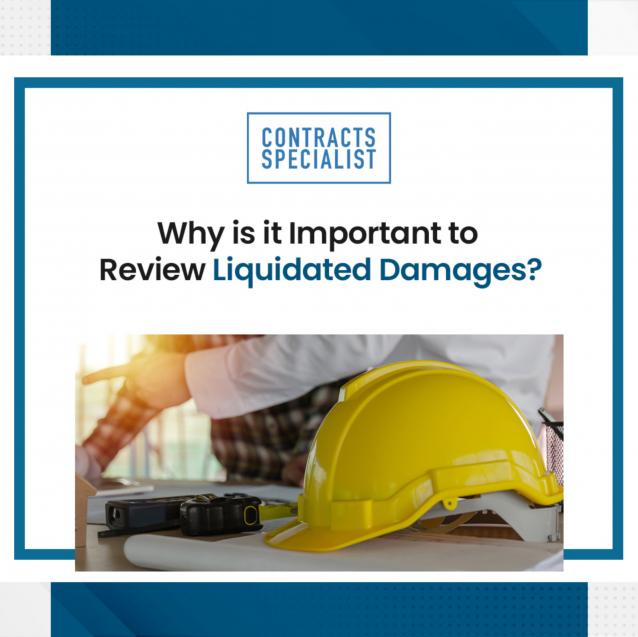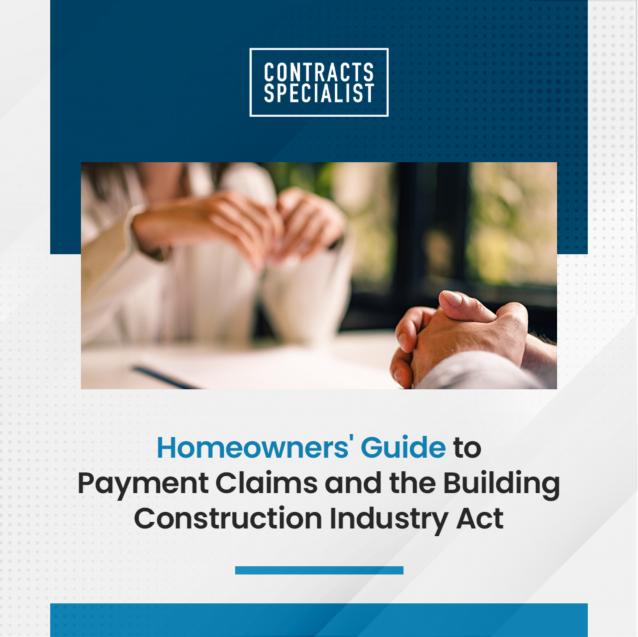
Subcontractor Not Getting Paid: What To Do When Your Contractor Doesn’t Pay You
By Contracts Specialist|July 07, 2022
What You Need to Know?
What are Subcontractor Payment Rights?
Contracts Specialist is here to help you get the money that is rightfully yours.
Stop worrying and let’s do something about it now. Here are your basic legal rights as a subcontractor:
Security of Payment Act
Contractors Debt Act
The Security of Payment Act and the Contractors Debt Act are two laws that help contractors get paid for construction work performed, or for related goods and services supplied. The Building and Construction Industry Security of Payment Act 1999 (also known as the Security of Payment Act), is a law that ensures that any party who performs construction work, or supplies related goods or services, is able to promptly receive all progress payments that are due, including final payments and retention monies. The Security of Payment act dispenses with the old “pay when paid system.”
The Contractors Debt Act 1997 (NSW) (also known as the CDA) allows subcontractors to recover payment for work carried out, or for materials supplied. It lets the subcontractor recover debt directly from the principal (the owner) when the builder defaults.
What’s the difference between the two? The Security of Payment Act may be a pre-requisite before a contractor can recover payment under the CDA. This is because to claim payment under the CDA, the contractor must first obtain a debt certificate. This debt certificate can be obtained through court proceedings, generally under the Security of Payment Act.
How long have you been waiting for payment? Get expert advice from a construction lawyer now. You have the right to get paid!
Steps to Take When a Contractor Refuses to Pay Subcontractors
1. Contract Dispute Resolution
When things go wrong, you may use the dispute resolution clause described in your existing subcontractor agreement contract.
2. Apply for Adjudication
Adjudication is the process resolving disputes without resorting to lengthy and expensive court proceedings. You have the right to apply for this, and this process is an easy way to resolve the payment dispute, with the help of an Adjudicator.
3. Apply for a Garnishee Order
After obtaining an adjudication certificate, you may also opt to obtain a garnishee order. A garnishee order for debts is a court procedure that allows you to recover the adjudicated amount from the other parties’ bank, or any third person owing money to the other party (garnishee).
This is a much faster process to claim the adjudicated amount as you will only need to file a notice of motion for garnishee order for debt before a court with competent jurisdiction.
Take Note:
4. Serve a Payment Withholding Request
Another way to deal with the non-paying party after getting an adjudication certificate, is by sending a payment withholding request.
You can serve a payment withholding request on a principal contractor. After you’ve applied for adjudication, you should:
Complete the payment withholding request form and statutory declaration
Send the forms and a copy of the adjudication application to the principal contractor
5. Commence Legal Proceedings
If the payment dispute remains unresolved by adjudication, you may commence court proceedings, which, however, may be a lengthy and costly process.
What are Subcontractor Payment Rights?
Contracts Specialist is here to help you get the money that is rightfully yours.
Stop worrying and let’s do something about it now. Here are your basic legal rights as a subcontractor:
- Right to make a payment claim
- Right to suspend works or supply of goods?
- Right to apply for adjudication
- Right to enter a judgment in court
Security of Payment Act
Contractors Debt Act
The Security of Payment Act and the Contractors Debt Act are two laws that help contractors get paid for construction work performed, or for related goods and services supplied. The Building and Construction Industry Security of Payment Act 1999 (also known as the Security of Payment Act), is a law that ensures that any party who performs construction work, or supplies related goods or services, is able to promptly receive all progress payments that are due, including final payments and retention monies. The Security of Payment act dispenses with the old “pay when paid system.”
The Contractors Debt Act 1997 (NSW) (also known as the CDA) allows subcontractors to recover payment for work carried out, or for materials supplied. It lets the subcontractor recover debt directly from the principal (the owner) when the builder defaults.
What’s the difference between the two? The Security of Payment Act may be a pre-requisite before a contractor can recover payment under the CDA. This is because to claim payment under the CDA, the contractor must first obtain a debt certificate. This debt certificate can be obtained through court proceedings, generally under the Security of Payment Act.
How long have you been waiting for payment? Get expert advice from a construction lawyer now. You have the right to get paid!
Steps to Take When a Contractor Refuses to Pay Subcontractors
1. Contract Dispute Resolution
When things go wrong, you may use the dispute resolution clause described in your existing subcontractor agreement contract.
2. Apply for Adjudication
Adjudication is the process resolving disputes without resorting to lengthy and expensive court proceedings. You have the right to apply for this, and this process is an easy way to resolve the payment dispute, with the help of an Adjudicator.
3. Apply for a Garnishee Order
After obtaining an adjudication certificate, you may also opt to obtain a garnishee order. A garnishee order for debts is a court procedure that allows you to recover the adjudicated amount from the other parties’ bank, or any third person owing money to the other party (garnishee).
This is a much faster process to claim the adjudicated amount as you will only need to file a notice of motion for garnishee order for debt before a court with competent jurisdiction.
Take Note:
- The garnishee has 14 days to respond to the garnishee order served on them.
- If the garnishee has no connection with the other party, the former may reapply for another garnishee order against a new garnishee.
4. Serve a Payment Withholding Request
Another way to deal with the non-paying party after getting an adjudication certificate, is by sending a payment withholding request.
You can serve a payment withholding request on a principal contractor. After you’ve applied for adjudication, you should:
Complete the payment withholding request form and statutory declaration
Send the forms and a copy of the adjudication application to the principal contractor
5. Commence Legal Proceedings
If the payment dispute remains unresolved by adjudication, you may commence court proceedings, which, however, may be a lengthy and costly process.



